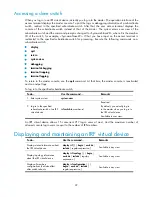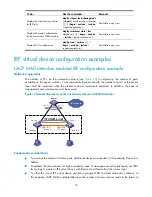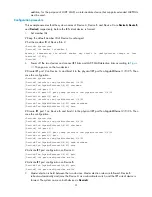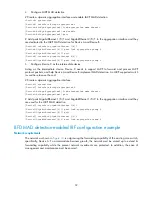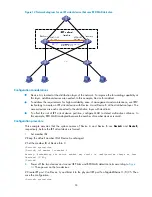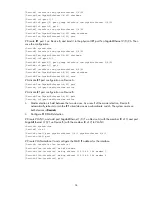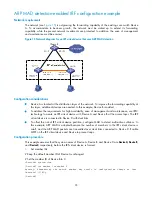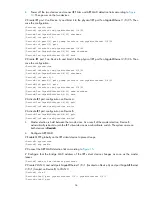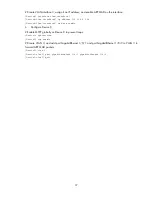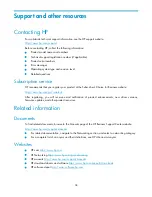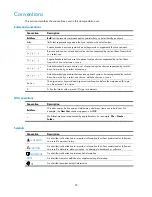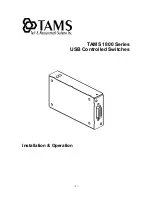
24
To configure BFD MAD:
To do…
Use the command…
Remarks
1.
Enter system view
system-view
—
2.
Create a new VLAN
dedicated for the BFD MAD
detection
vlan
vlan-id
Required.
The default VLAN on the device
is VLAN 1.
3.
Return to system view
quit
—
4.
Enter Ethernet interface view
interface
interface-type interface-
number
—
5.
Assign the
port to the
VLAN
dedicated
for the BFD
MAD
detection
Access port
port access vlan
vlan-id
Required.
Select one approach according
to the port type.
BFD MAD detection has no
requirement on the link type of
the detection port, and you do
not need to modify the current
link type.
By default, the port is an access
port.
Trunk port
port trunk permit vlan
vlan-id
Hybrid port
port hybrid vlan
vlan-id
6.
Return to system view
quit
—
7.
Enter VLAN interface view
interface vlan-interface
interface-
number
—
8.
Enable BFD MAD
mad bfd enable
Required.
Disabled by default.
9.
Configure a MAD IP address
for the VLAN interface on the
specified member
mad ip address
ip-address
{
mask
|
mask-length
}
member
member-id
Required.
By default, no MAD IP address
is configured for any interface.
You must assign all ports on the BFD MAD detection link (on both the IRF member and the intermediate
device) to the BFD MAD VLAN, the VLAN specific to the BFD MAD-enabled VLAN interface.
A BFD MAD-enabled VLAN interface and all ports in the VLAN do not support any Layer 2 and Layer 3
protocol applications, including ARP and LACP.
You cannot enable BFD MAD on VLAN-interface 1.
Do not bind a BFD MAD-enabled Layer 3 interface to any VPN instance. The MAD function cannot work
with VPN.
Do not enable the spanning tree function on the ports on the BFD MAD detection link. The MAD function
cannot work with the spanning tree function.
Assign the MAD IP address for an interface used for BFD MAD detection only with the
mad ip address
command, and cannot configure other IP addresses for it ( including common IP address or VRRP virtual
IP address configured with the
ip address
command).
If an IRF virtual device configured with the BFD MAD function is partitioned into two IRF virtual devices,
routing collision information (for example, %May 5 16:15:47:733 2010 HP
ARP/3/ROUTECONFLICT:Chassis=2-Slot=5;Route conflict found, IP:192.168.2.1, VrfIndex:0) may be
generated because the new IRF virtual devices still keep the forwarding entries with the destination being
the original master. This collision information does not affect the switch forwarding and automatically
stops to be generated with the aging of the forwarding entries.




















